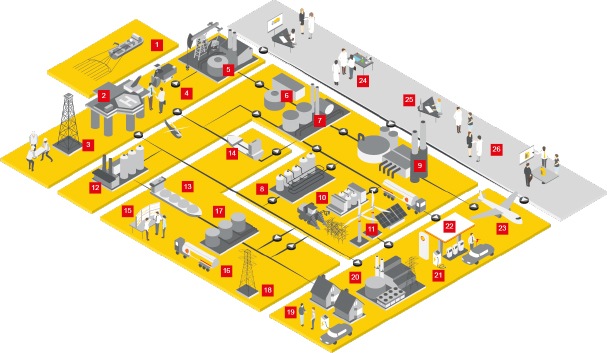Case study Taxation of LNG with offsets
We are working with our customers to reduce the emissions created when they use our energy products. New types of products and supply chains will be established to meet the growing demand for low-emission products. We expect this to change the amount and types of taxes we pay in some countries.
For example, we provide liquefied natural gas (LNG) with offsets [A] which uses nature-based carbon credits to offset the full life-cycle emissions associated with the production and use of LNG. Credits are sourced from Shell’s global portfolio of nature-based carbon offset projects. Our cargoes of LNG with offsets span many tax jurisdictions, from the countries where we source our LNG and carbon offsets to the countries where our customers are located. The taxation of LNG with offsets is complex because of the different tax rules in different locations.
The revenue from the sale of a cargo of LNG with offsets is assessed for tax when the title passes to the customer. Direct and indirect taxation may vary in some jurisdictions, depending on whether the LNG and the carbon credits are bundled or sold separately.
There may be differences in the indirect tax treatment of LNG and carbon credits, depending on the jurisdiction of the seller. In addition, there may be different customs and indirect tax treatments in the customer’s import jurisdiction.
[A] The terms “carbon offset” or “carbon offset compensation” indicate that Shell has engaged in a transaction to ensure that an amount of carbon dioxide equivalent to that associated with the production, delivery and usage of the fuel has been removed from the atmosphere through a nature-based process or emissions saved through avoided deforestation. Further information is available on Shell’s climate target and investments in natural ecosystems.









